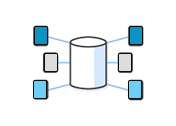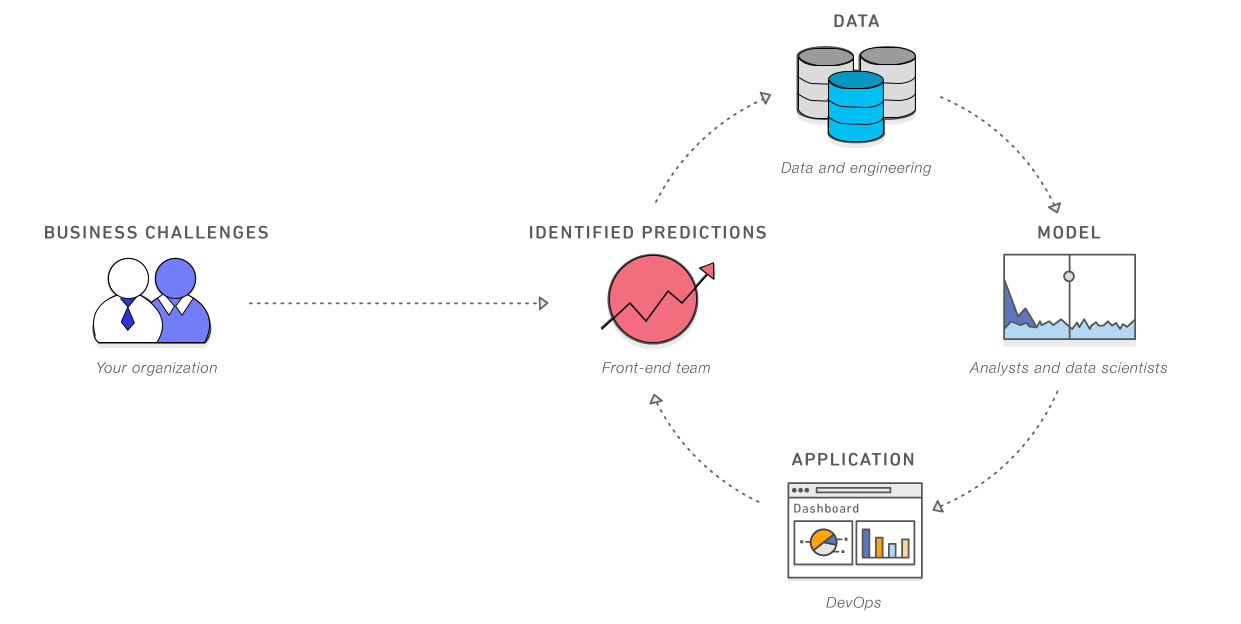What is Artificial Intelligence?
Artificial Intelligence is the discipline of computer science to provide solutions to common problems like learning, pattern recognization, and problem-solving which are associated with human intelligence. The AI (Artificial Intelligence) goes beyond the automatons of science fiction into non-fiction of advanced computer science. Machine Learning(ML) and Deep Learning (DL) are both are derived from the field of Artificial Intelligence (AI). The former Professor and Researcher Pedro Domingos specify the five kinds of Machine Learning which are revolutionaries that are related to evolutionary biology; symbolists with origins in logic and philosophy; connectionists from neuroscience; Bayesians with probability and statistics and analogize with origins in psychology.
Amazon Artificial Intelligence Services
AWS offers a range of Al model development and delivery platforms, as well as packaged Al-based applications. The Amazon AI suite of tools includes Amazon Lex for voice and text chatbot technology, Amazon Polly for text-to-speech translation and Amazon Rekognition for image and facial analysis.
AWS also provides technology for developers to build smart apps that rely on machine learning technology and complex algorithms. With AWS Deep Learning AMIS, developers can create and train custom AI models with clusters of GPUs or compute-optimized instances. AWS also includes deep learning development frameworks for MXNet and TensorFlow.
On the consumer side, AWS technologies power the Alexa Voice Services, and a developer can use the Alexa Skills Kit to build voice-based apps for Echo devices.
Machine Learning
Machine Learning (ML) is well-known and commonly applied to a number of Bayesian techniques that are used for pattern recognization and learning. ith the collection of algorithms in the Machine Learning, you can learn from and make predictions on recorded data and extract hidden structures from data and classify the data.
To find the optimal function that predicts the output with respective input the ML model can analyze millions of examples. The Ml model provides statistical confidence in predictions in the entire process.
Machine Learning at Amazon
Amazon is developing a lot of business with ML-based systems like customer experience and the selection & optimize of its logistic speed and quality. The AWS started by Amazon was to allow other businesses to enjoy the same IT infrastructure with cost benefits but now the ML technologies continue to provide services like in every business. Amazon.com and AWS focused on ML to find the solution to business problems which makes Amazon and AWS easy to use and powerful tools and services.
Implementing ML in your Business
Machine Language is mainly used to predict future outcomes. Let’s consider an example, the organizations use ML to predict how many products will be sold in future financial quarters based on the statistics or it will estimate which customer can be a dissatisfied or more loyal customer.
So, these predictions are more helpful to take better business decisions, personal user experience and potential to reduce customer retention costs. It is an add-on to Business Intelligence (BI) that helps to focus on reporting previous business data and the ML predicts future outcomes based on past transactions.
To get the successful implementation of ML there are several steps to embrace. At first, identify the right problem like identifying the prediction will be like a benefit for business if it’s determined. Now the data must be collected on historical business metrics such as sales, transactions, etc ). The ML model can be build based on the data after the data is aggregated. The ML model run and predicts the output of the model is applied to the business system to make informed decisions.
Deep Learning
Deep Learning is a branch of machine learning that involves layering algorithms to understand the data. These algorithms are no longer limited to create an explainable set of relationships with basic regression. Rather than depend on these layers of non-linear algorithms to create distributed representations on a series of factors. With the help of large sets of training data, the DL algorithms can identify the relationships between elements and these relationships may be between colors, words, shapes and more. With ML (Machine Learning) and AI (Artificial Intelligence), the power of DL (Deep Learning) can identify the relationships where the human can practically code in software or relationships that humans can’t. For very complex data you can predict with the networks of algorithms.
Deep Learning Benefits
The DL uses Cloud Computing to allow large datasets to insert easily and manage the algorithms and it allows deep learning models to scale efficiently at low cost with GPU processing power. By the distributed networks, DL allows you to develop, design and train DL applications faster.
Speed
The Deep Learning (DL) algorithms are designed to learn quickly. but with the help of clusters of GPU and CPU of complex matrix operations to compute-intensive tasks. These models deployed to process huge amounts of data and produce a relevant result with rapid growth.
Flexibility
The Deep Learning frameworks like Apache MXNet, TensorFlow, Caffe, Caffe 2, Torch, Keras and the Microsoft Cognitive Toolkit, can run and use the packaged libraries of DL algorithms suited for your task, it may be mobile, web or connected devices.
Scalability
Deep Learning neural networks are suited for multiple processors, distributing workloads and across different processor types and qualities. You can deploy virtual unlimited resources to keep DL models in any size with on-demand resources.

